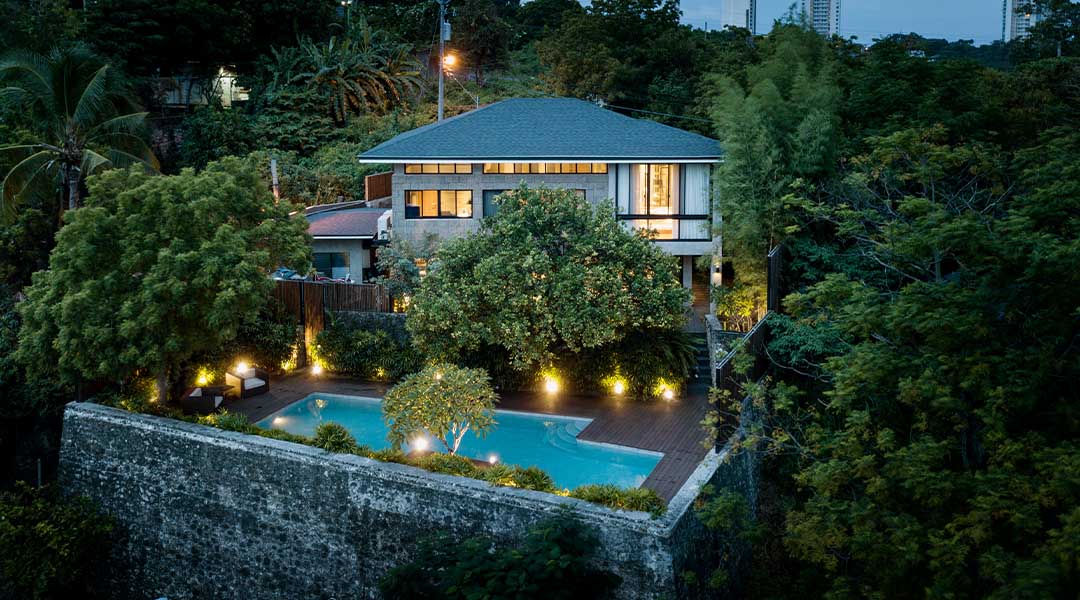
This hillside revival by LLG Architects breathes and indulges the senses
Eight kilometers north of Cebu city center, via the Transcentral Highway, is Nivel Hills, a woody hillside residential community looking back over the oldest and first capital of the Philippines. Off the highway and winding through the country road to a secluded corner of the neighborhood is a house screened off with a rusticated wall and a wide slatted timber gate framed in black-painted steel. One’s expectation of what lies ahead begins rather placidly.
Drawing the bespoke-fabricated gate back, you enter the 534-square-meter lot with the mass of the shallow pitched-roof residence appearing diminutive in height. The stone-finished wall, a retaining one, wraps around the lot and begins to decline in response to the sloped topography; adobe stone partially clads the front elevation, a nod to the previously built masonry keeping the lot from subsiding. The architect couple, Patrick Lendel and Leizle Marie Go, principals of their eponymous firm, LLG Architects, took us around and briefly gave us an account of the house’s backstory.
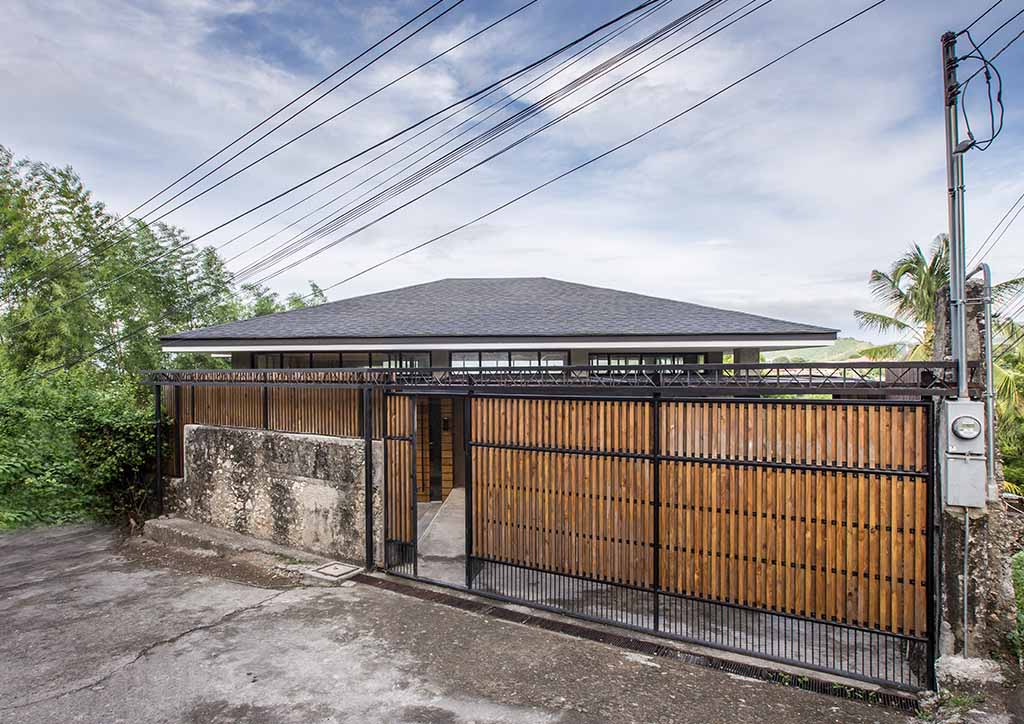
In 2014, the client approached LLG Architects after they had acquired an existing property from a friend who had to sell it to pursue a new life as a flower farmer. The previous owner had built the original house in the late 1990s for his family. Still, unforeseen circumstances led to the house being offered to his friends and present owners, who were in the business of design-and-build to sell. They took the project as a favor but also recognized it “had the potential to be something more than what it was.”
READ MORE: Cebu’s Bayanihan Flats is elevating low-cost housing
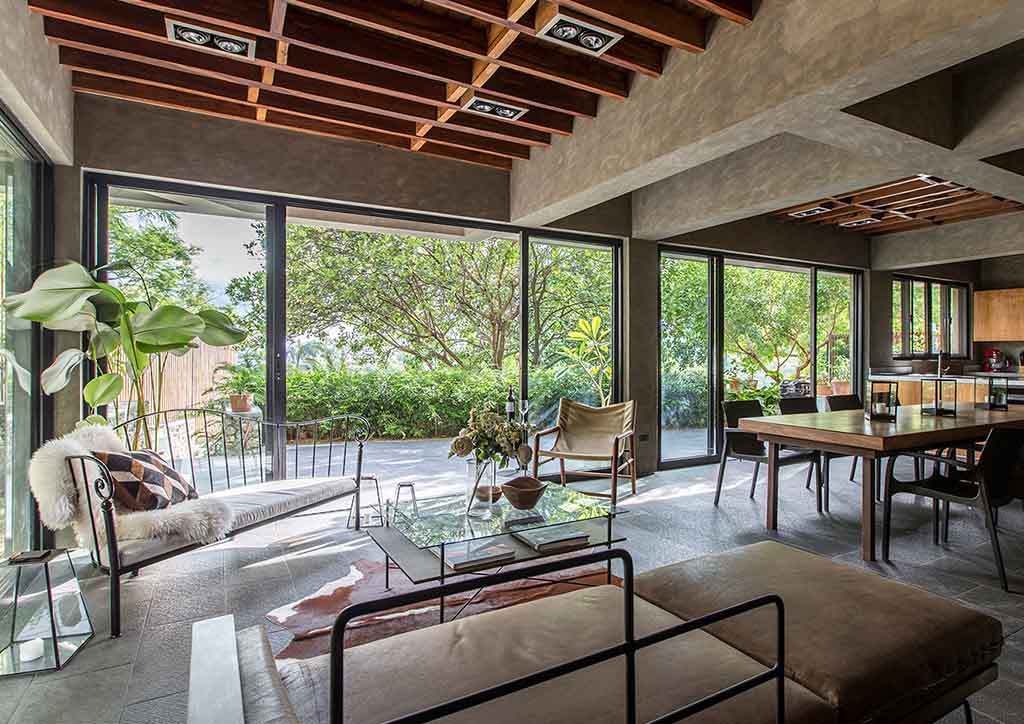
The dialogue between the architect and client resulted in a design approach hinged upon three inherent aspects of the existing two-story property: the peaceful environs of the neighborhood which attunes oneself to the spectacular panoramic views; retaining the character of the original unpainted and unplastered finishes, as well as the timber flooring and joists; and finally, the opportunity to convert the orchid garden, which faces the valley, into a swimming pool while keeping the three existing, mature pomelo trees. The ingredients for an overhaul were already promising.
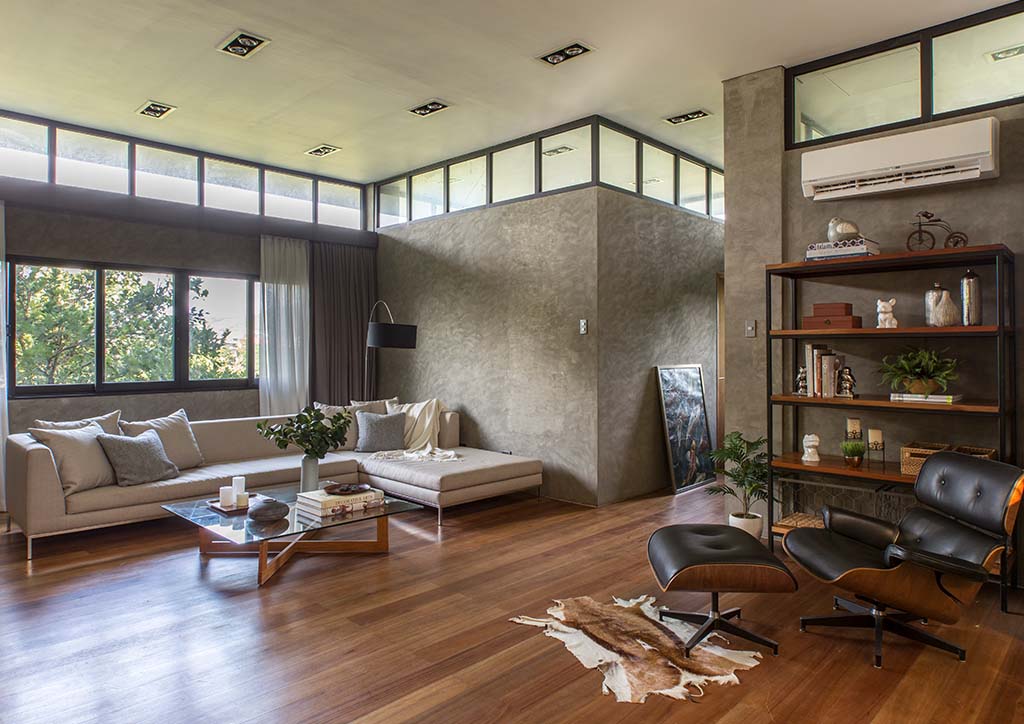
In total, the 203-square-meter house took three years to renovate, mostly owing to the clients’ business commitments rather than the complexity of the build. This doesn’t detract, however, from the shrewdness of the interventions made to simplify and accentuate the experience of living in a home perched in the highlands of Cebu island. LLG Architects replaced the rotting and sagging timber roof trusses with steel ones. It was then raised by half a meter to install clerestory windows all the way round to introduce more daylight and give the cozy living and bedroom floor more breathing space. Internal partition walls were removed to create visual connections across the spaces and maximize sightlines to the scenery outside.
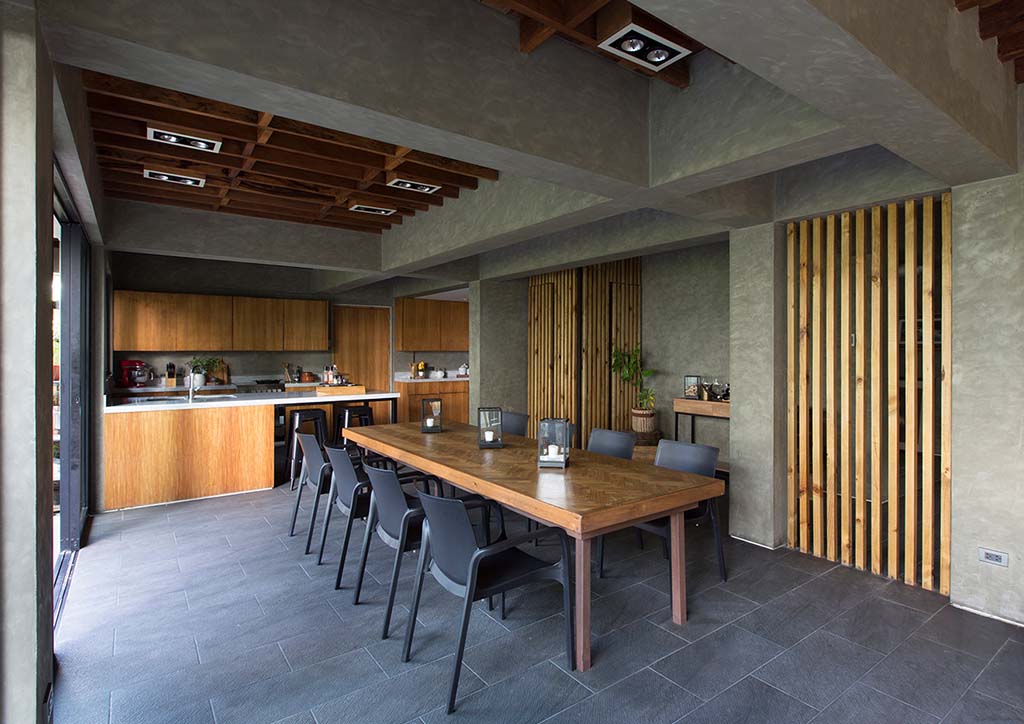
YOU MIGHT LIKE: A hundred walls for worship in Cebu by CAZA
Going down to the lower level, which lies snug on the hillside, the structure holding the ground floor up finds an architectural expression that also defines the open plan. The columns and timber slat infill demarcate the descent into the space and the combined living, dining, and kitchen. The beams appear to widen the space while also framing the exposed timber joists, which comprise of a combination of red lawaan (or shorea), kamagong, and narra. The clearances afforded by the wide loadbearing spans allow the full height sliding windows to offer unimpeded visual amenity to the outside, while also drawing in hillside breezes when open. Once outside onto the pool deck, the house recedes behind the pomelo trees, and one can indulge the senses amidst the landscape.
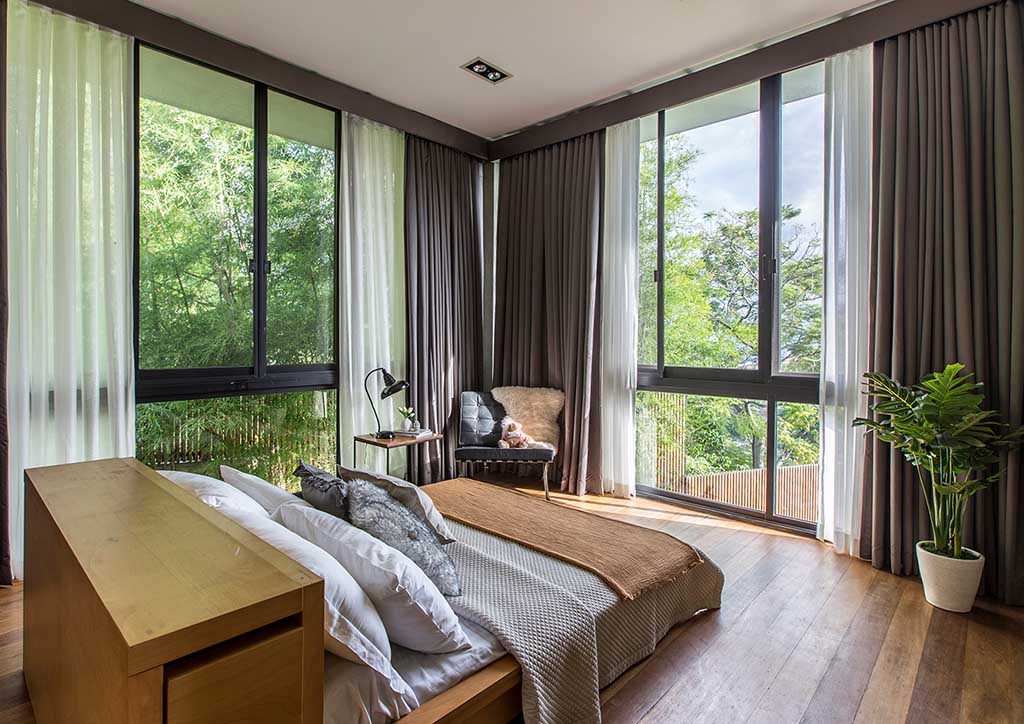
The house’s higher altitude and single-facing aspect give it the optimum conditions for passive cooling. The largest openings on the southwest elevation ensure its spaces receive plenty of airflows, while the trees help shade the house from solar heat gain throughout the entire day due to its steep location. Asphalt shingles replaced the original corrugated GI sheets to improve insulation from both heat and sound. In short, LLG Architects capitalized on the original house’s prime orientation, and the rest followed.
READ MORE: Magnificent views of Mt. Makiling in 8×8’s MV House
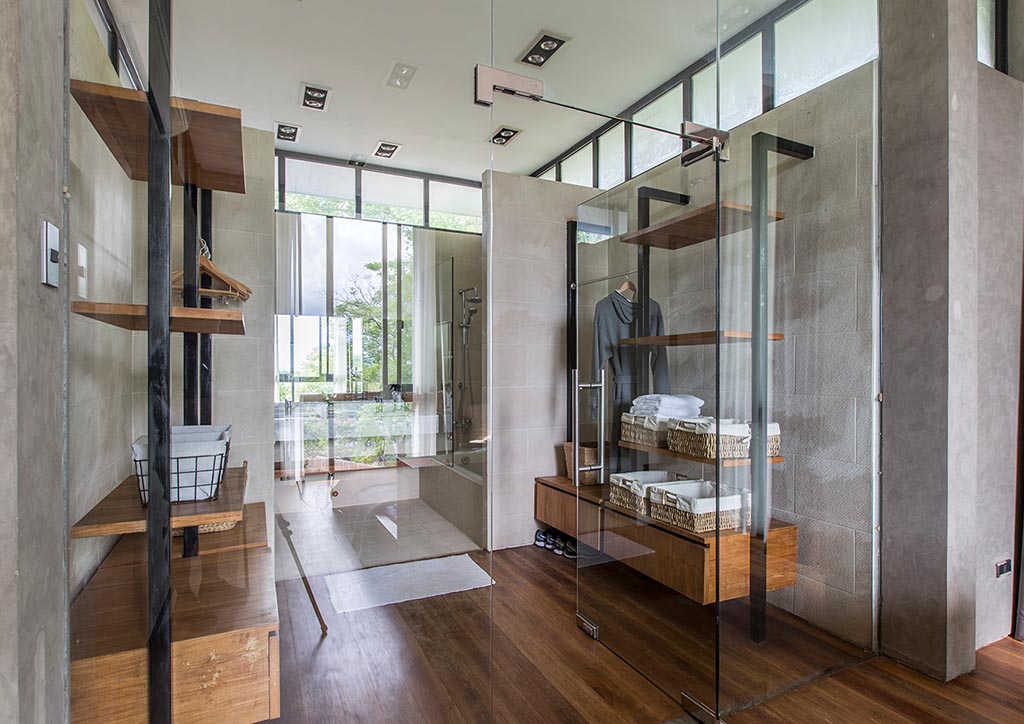
The property developer clients were so fond of the redesign that they decided not to sell and, instead, use it as their weekend home. You can find their collection of art and architecture books on the house’s parquet wood coffee tables, crafted by a local carpenter, adding to the tactile charm of the interiors. Items are displayed from the client’s travels while well-known statement chairs bring their interest in design to the foreground. Guests often stay to the wee hours of the morning to fully soak up the idyll—one they can hold onto once they depart.

Reiterating the use of hardwearing finishes and open spatial planning, the clients preen, “Our kids run around the house wet from the pool. They spill drinks on the floor, and the house takes it in stride because we designed it to be used and lived in. Not as a showcase or trophy.” Indeed, the house does not yearn to be a design that demands attention, but even way before LLG Architects stepped in, always brings your gaze toward the vistas beyond and rightfully so.![]()
This first appeared on Tropical Architecture for the 21st Century Volume 2. Edits were made for BluPrint online.
Photographed by Ed Simon
YOU MIGHT LIKE: The Pig and Palm: Neri&Hu’s temple for tapas in Cebu


